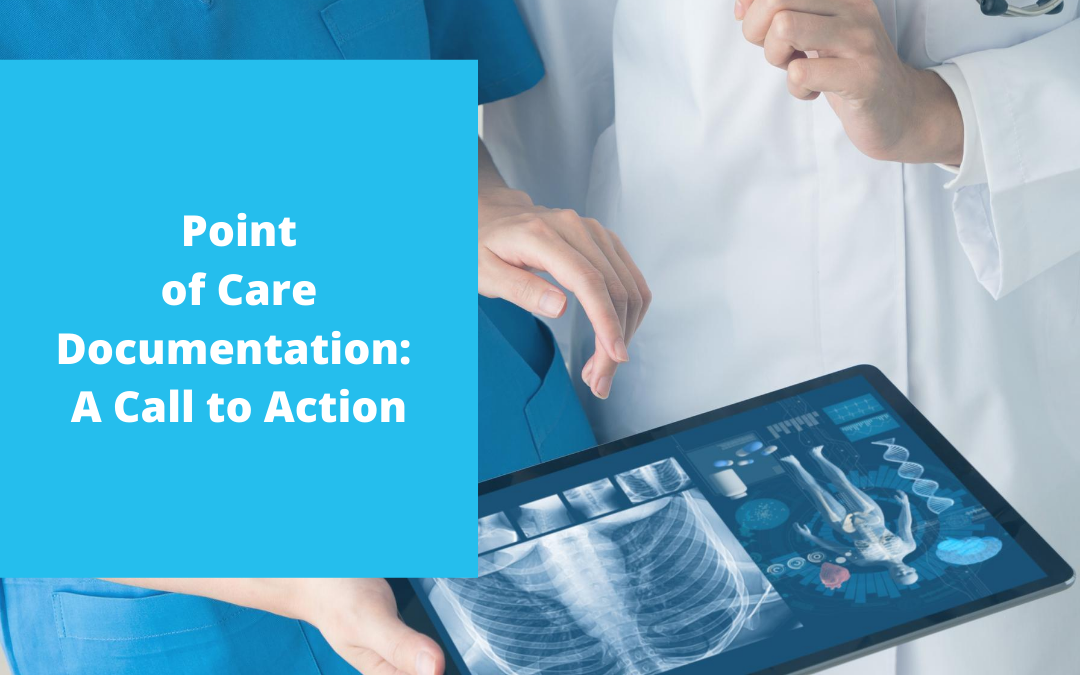Medical care information technology is a swiftly modifying field of possibility for practitioners in the international healthcare community, vowing to enhance the protection of patients, while also curtailing time-consuming activities for doctors and nurses engaged in patient documentation. It also looks towards upgrading work activities, and improve patient care and support outcomes by facilitating the course of information within healthcare centers and throughout the medical care sector.
The fundamental framework of accomplishing these results shortly will be Point of Care (PoC) technology – the hardware and algorithms employed by nurses and physicians to enable modifications to documentation, distributing, and harnessing of patient data, coupled with remote patient monitoring. PoC technology is being affirmed in the medical industry, influencing patient outcomes, and transforming into a cornerstone for IT operations of healthcare centers.
What is Point of Care Documentation?
PoC technology incorporates the tools and software that aids healthcare specialists in their routine tasks of observing patients, administering care and support, and recording the progression of their healthcare status and ailments. The employment of PoC documentation accredits healthcare personnel in two crucial ways:
- Bedside Practice – The most significant feature of PoC technology is that it is present at the bedside. PoC technologies are adopted to aid and enhance communications between patients and their physicians and healthcare counselors, resulting in favorable and promising healthcare outcomes.
- Technological Flexibility – Point of Care technologies that provide medical personnel access to the healthcare clinic’s virtual network are practically endless in their application for enriching patient outcomes. If you’re looking at a portable PoC terminal that primary caretakers can circulate between patients or a fixed installation that a nurse utilizes for triage in patient intake, PoC instruments have considerable flexibility and software similarity and agreeability, facilitating front-line healthcare workers to handle their necessities in the most beneficial way.
PoC documentation furnishes the capacity for clinicians to report patient outcomes and examinations, while monitoring their health in remote circumstances. Recording and documenting this data in real-time while communicating with patients generates many advantages as well as a few difficulties.
Benefits of Point of Care Documentation:
Precision and Accuracy of data is amplified by documenting it in “real-time”. There is no longer a requirement for written statements or memory of the circumstances of the patient interchange. Promptness of rendering the patient’s visits’ conclusions available is also developed as it is instantly enabled to other healthcare providers, which is crucial in environments where patients are supported by several disciplines within the same consultation.
By delivering the suitable tools at PoC, medical providers can conclude the records and documentation plausibly eradicating downstream modifications to visit diagnosis. Moreover, PoC also boosts the speed of procuring such knowledge to billing for procedures and compliance.
PoC Technology also promotes access to Electronic Medical Records. The virtualization of patient documents has produced a notable advantage for healthcare services. This advanced design of discovering and recording patient healthcare information permits clinicians in healthcare centers to improve availability, revise, secure, and distribute patient’s medical records utilizing Point of Care Technology.
Employee utility is also strengthened through PoC Documentation. If the correct data is provided at the point of care, documentation time is considerably reduced. Adopting a solution that is steady, accessible, and consumer-friendly empowers the provider to be time-effective and productive. The true benefit of the employees is that there is a personalized experience. When increased documentation is performed in the field, in the patient’s residence or at the bedside, it is executed during their work hours, resulting in heightened levels of job satisfaction.
Furthermore, PoC Documentation supports a team-based technique for patient management. Several touchscreens clinical workstation (TCW) appliances permit instantaneous dissemination of patient data between various positions in a clinic during a patient-practitioner consultation (e.g. patient enrollment, vital signs checkup, nurse assessment room, doctor examination room, dispensary). Clinical estimations can also be carried out alongside RPM Tools examinations for checks, such as Body mass index (BMI) calculation based on the patient’s weight and height, doses of pediatric antiretroviral drugs and pills based on a young adult’s weight and medical and behavioral compliance and adherence as per the last and current appointment date, medicines remaining and pills distributed from the pharmacy at the last visit.
Drawbacks of PoC Documentation:
According to the National Library of Medicine, Electronic medical record (EMR) point-of-care (PoC) documentation in patients’ rooms is a novel shift in the employment of technological services in healthcare institutions. PoC documentation curtails unproductivity, diminishes the chances of errors, encourages data exchanges, and promotes nurses to be available at the bedside. However, this study found that EMR PoC documentation can divert the nurse’s concentration away from the patient and disturb and disrupt the nurse-patient interaction.
In many situations, PoC documentation systems are not consumer-friendly. They need too many “clicks” to operate, data is concealed and complex to collect and devices are challenging to manage to obtain crucial patient information. According to the Journal of the American Medical Informatics Association, medical providers consume more than 50% of their time in the clinic handling the EHR as compared to communicating with the patient. Harnessing bedside or point-of-care systems escalated the documentation time of clinicians by 17.5%. However, the management of central station desktops for computerized provider order entry (CPOE) was observed to be ineffective, extending the job duration from 98.1% to 328.6% of the practitioner’s time per working shift.
A Call to Action – PoC Documentation as the Way Forward
PoC technology has a glowing future in the healthcare sector, as a result of the broad and extensive virtualization of healthcare documents. As hospitals enlarge and develop their infrastructures to enhance access to and utilize EMRs, medical practitioners and individual applications can be assisted and rewarded exceptionally from garnering PoC Technology.
Practitioners are enabled to make smarter decisions for patients, due to the availability of recent, new, and practical patient data. The proliferation of both stationary and portable point-of-care systems throughout clinics will facilitate better documentation tasks among nurses, allowing them to concentrate on inpatient care and support tasks.
PoC technology is the way forward. Telehealth is the support system for PoC Documentation. The implementation of electronic medical record-keeping in a global landscape is paving the way for PoC technology to be more significant and critical than ever for healthcare centers that aim to sustain a competitive field in the medical service of delivery of care today.

Kelton High is a Social Sciences undergraduate who majored in International Relations, with a budding interest in qualitative research. He has previously worked at Transparency International.

